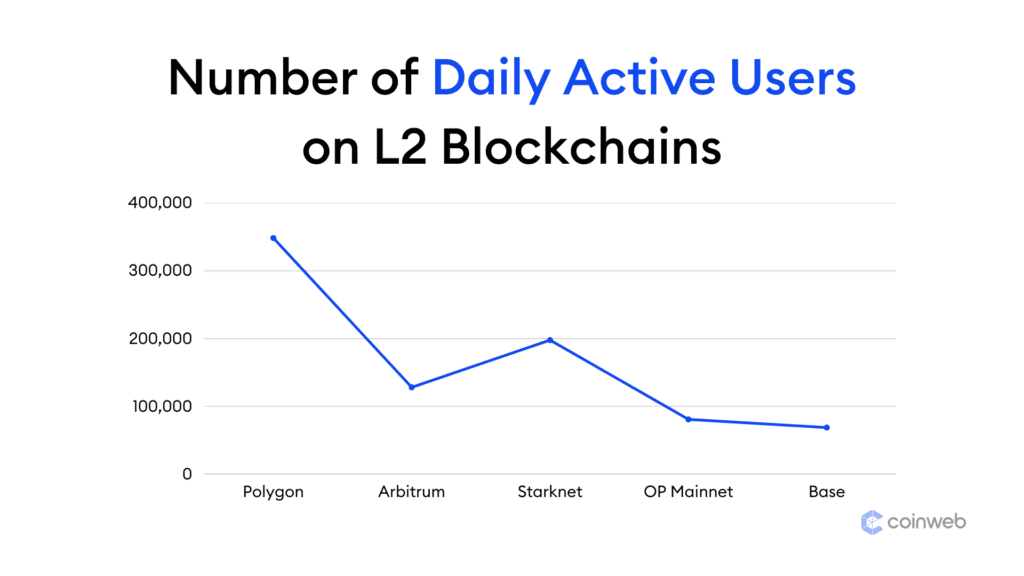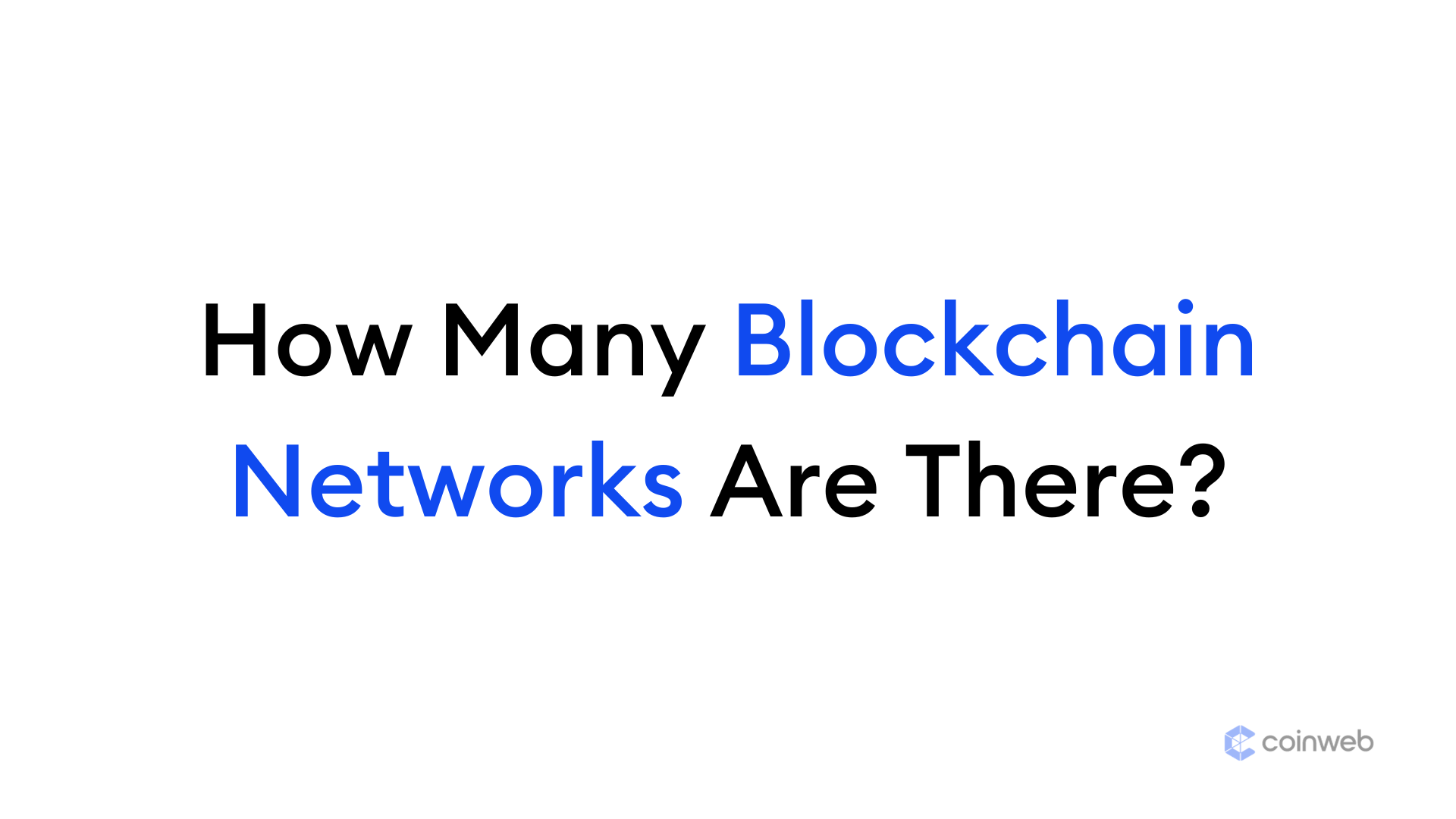Blockchain technology, a revolutionary digital ledger system, has grown exponentially. As of 2023, over a thousand blockchain networks exist globally, each with unique features and applications.
With four main types: public, private, consortium, and hybrid blockchains, this technology is transforming various sectors. However, understanding the breadth and depth of these networks can be challenging.
In this statistics article, we will answer the question: how many blockchain networks are there? This question will allow us to explore, from an unconventional point of view, the world of blockchain networks and its evolution.
Top 5 Facts on Blockchain Networks
Here are the top 5 facts to know about blockchain networks:
- The latest count on blockchain networks exceeded 1,000 different systems. (DemandSage)
- 28% of the blockchain developers work on either Bitcoin or Ethereum development. (ChainDebrief)
- Nearly 67% of existing blockchain networks are private, meaning the data access is only for a limited group of users. (EY)
- In terms of active users, Tron obtained the best result in the market in September 2023, with 1,323,351 active accounts. (Token Terminal)
- If we look at the total value locked (TVL), in October 2023, Ethereum surpassed the 70% barrier of the overall market. (CoinMarketCap)
Types of Blockchain Networks
Blockchain networks have evolved substantially and differ notably in their structure, with private blockchains taking the lead. Despite the prevalence of private blockchains, a shift towards public cloud-based blockchains is anticipated in the next decade.

There exist over 1,000 different blockchain systems globally, divided among public, private, hybrid, and consortiums.
Two-thirds of the blockchain ecosystem belongs to the private structure, i.e., closed and permissioned.
This amount reflects a small part of the projects that came to light: only 14% of the private blockchain networks actually managed to go live.
The long-term trend is changing: by 2030, two out of three blockchain networks in the US will run on the public cloud, while the remaining will mostly consist of systems running on private or hybrid clouds.
As an alternative to private, public, and hybrid blockchains, the number of active blockchain consortiums remains low, with 53 active projects.
In terms of income distribution, 27% of the companies leveraging blockchain networks have a yearly revenue above $10 billion.
Interestingly, the market has two clear poles, with the portion of companies having a yearly revenue lower than $100 million.
It is also interesting to note that 40% of the companies using blockchain networks belong to the banking and financial services.
Source: DemandSage, EY, Built In, BlockData, GrandViewResearch
The User Preference in Blockchain Networks
Layer-1 (L1) and Layer-2 (L2) blockchain networks are gaining popularity, with a significant increase in daily active users.
Some L1 blockchains, such as Ethereum and Bitcoin, have maintained their position as top players in the market. However, we can also see a rise in the usage of L2 blockchains, with Polygon and Arbitrum leading the pack.

L1 daily active users
As of September 2023, the L1 blockchain with the highest daily users was Tron, with 1,323,351 average users.
BNB Chain followed Tron, with 957,349 active users, on average.
NEAR Protocol’s popularity was also confirmed, with 651,969 active users.
Bitcoin (BTC) ranked fourth, having an average of 631,190 daily active users during the month.
Ethereum (ETH) ranked only fifth in the month, with 359,609 daily active users.
The other L1 blockchain networks are lagging in daily active users, with Flow (FLOW) having 92,451 active users, followed by Solana (SOL) and its 83,903 users.
It was not always this way: for instance, in October 2022, the daily user count of NEAR was only equal to 72,633.
Between October 2022 and September 2023, Tron (TRON) lost a considerable number of daily users. In October 2022, Tron’s average daily users were 1,784,695.
Bitcoin’s position remained solid, with the data from October 2022 showing 610,711 daily active users.
Ethereum’s position is also stable in the market: the data from October 2022 showed 338,638 active users.
L2 blockchain daily active users
If we shift our view to the L2 blockchain, we see the highest number of daily active users in September 2023 was Polygon (MATIC), with an average of 348,506 users.
Starknet’s rapid growth led this L2 blockchain to rank 2nd, with 197,797 average daily active users.
Arbitrum’s (ARB) importance reached a peak in April 2023, with 226,708 users.
However, the data from September 2023 showed a strong decline in Arbitrum’s number of active users, with only 128,122 daily users.
Source: Token Terminal
Table 1: Average Daily Users Across L2 Blockchains (Token Terminal)
| Date | Polygon | Arbitrum | Starknet | OP Mainnet | Base |
| October 2022 | 357,703 | 64,344 | 4,412 | 28,913 | 0 |
| November 2022 | 339,153 | 60,603 | 5,413 | 36,924 | 0 |
| December 2022 | 364,206 | 56,591 | 5,399 | 54,771 | 0 |
| January 2023 | 376,551 | 47,993 | 4,496 | 46,458 | 0 |
| February 2023 | 285,749 | 87,808 | 4,096 | 43,505 | 0 |
| March 2023 | 364,696 | 162,148 | 14,845 | 43,819 | 0 |
| April 2023 | 343,688 | 226,708 | 35,388 | 59,367 | 0 |
| May 2023 | 360,186 | 213,630 | 87,207 | 65,133 | 0 |
| June 2023 | 373,095 | 172,447 | 87,538 | 84,520 | 3 |
| July 2023 | 383,417 | 156,851 | 85,074 | 100,212 | 7,521 |
| August 2023 | 359,882 | 143,194 | 135,008 | 107,181 | 88,444 |
| September 2023 | 348,506 | 128,122 | 197,797 | 80,816 | 68,752 |
Market Concentration Analysis
The number of active protocols and total value locked in different blockchain platforms provide insights into market concentration. Ethereum ranks first in both categories, indicating its dominance in the industry.

As of October 2023, 979 active protocols were running on Ethereum, making it the first choice for blockchain developers and companies.
The BNB Chain ranked second in popularity for blockchain developers, with 673 different protocols.
If we move down the list, Polygon ranked third thanks to its 498 protocols.
Very close to Polygon, Arbitrum ranked fourth with 483 active protocols.
Avalanche ranked fifth in this list, having 355 protocols on its blockchain.
The market appeared even more concentrated when looking at the total value locked (TVL): Ethereum’s TVL stands above 70% of the total industry, well above $200 billion.
In this TVL list, Tron is second, with over 10% of the total market TVL (less than $8 billion).
Source: CoinMarketCap
Conclusion
The blockchain ecosystem has transitioned from private to public cloud-based networks, with increasing preferences for Layer-1 and Layer-2 systems.
The dominance of BNB and Tron in terms of daily users, the rise of Layer-2 networks such as Polygon, and the market concentration favoring Ethereum indicate evolving trends in blockchain usage.
The fundamental shift between private and public cloud-based networks can potentially disrupt the current market dynamics, with a considerable increase in active protocols and total value locked.
Recommended Trends
A blockchain network is a decentralized digital ledger of transactions that is replicated and distributed across the entire network of computer systems on the blockchain.
There are three main types of blockchain networks: private, public, and hybrid. Private blockchains are limited to specific users or organizations, while public blockchains are open to anyone. Hybrid blockchains combine features of both private and public blockchains.
Layer-1 blockchain networks are the base layer of a blockchain system, while Layer-2 networks are built on top of Layer-1 and provide additional functionalities such as scalability and interoperability.
As of late 2023, Tron had the highest number of daily users, with an average of 1,323,351. BNB Chain and NEAR Protocol followed closely behind.
Currently, there are more public blockchain networks in use due to their open nature and potential for adoption by a larger user base. However, private blockchains also have their own advantages and are used by many companies for specific purposes. Overall, the trend is shifting towards more public cloud-based blockchain networks.






